

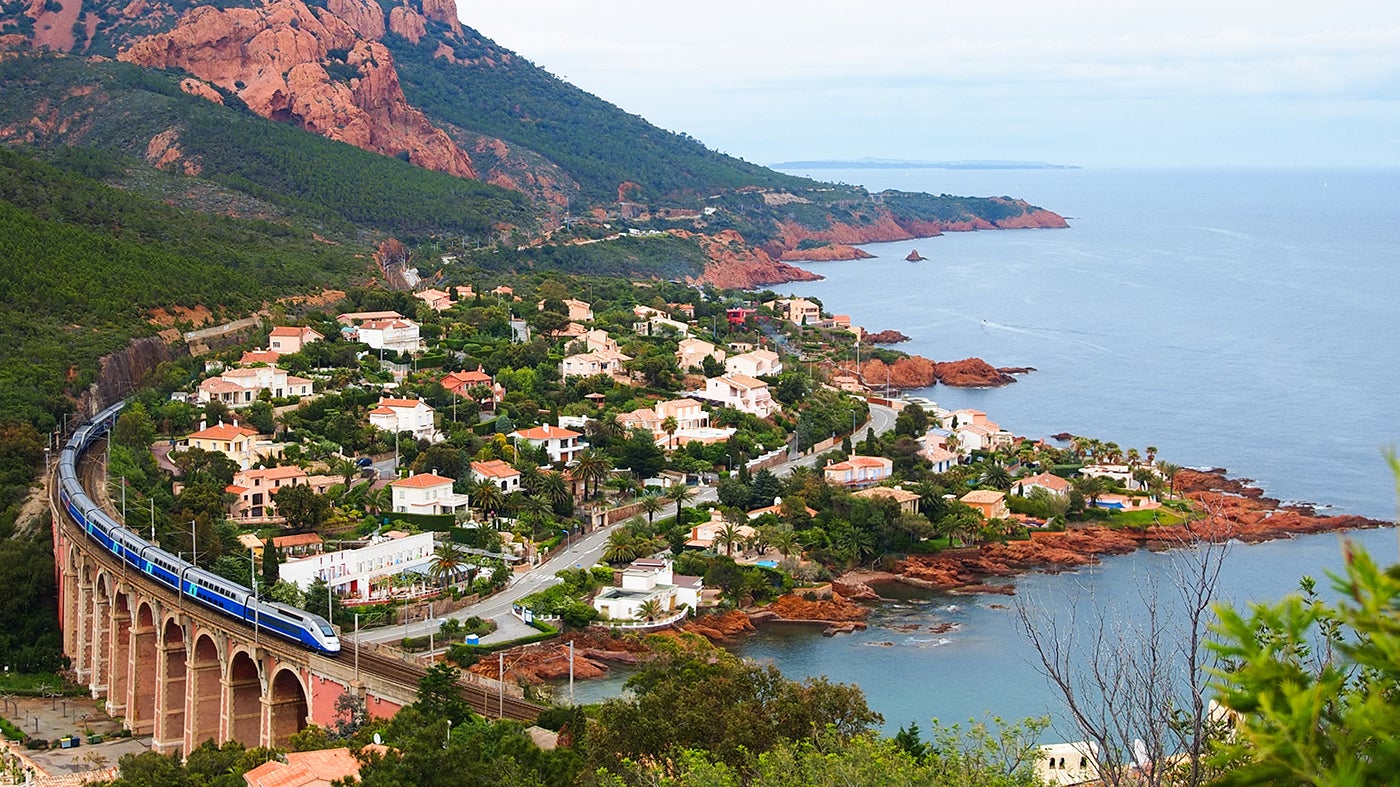
Europe has a long history of high-speed trains, being an early adopter after the first high-speed rail system, the Tokaido Shinkansen, began operations in Japan. Since France’s TGV network began development in the 1970s, the European high-speed rail network has grown to its current size of over 20,500km in length, including the Eurostar on the channel tunnel and the Trans-Alpine link through the Gotthard tunnel, with a further 14,500km currently under construction.
Following the initial European services in France, high-speed rail lines eventually grew across the continent, with notable networks now operating in Germany, Spain, and Italy.
Looking ahead to the future, high-speed rail is also a vital component of the great modal shift. As the world tries to transition to more sustainable forms of travel, high-speed trains offer the perfect answer to short-haul flights, given the vastly lower environmental impact.
Indeed, some countries are already introducing measures to incentivise choosing trains over planes, and capital investment also reflects the high-speed boom – half of the ten most expensive construction projects in 2023 were high-speed rail projects.
So, with that in mind, here’s an updated rundown of the ten fastest high-speed trains currently in service in Europe right now, by operational speed.
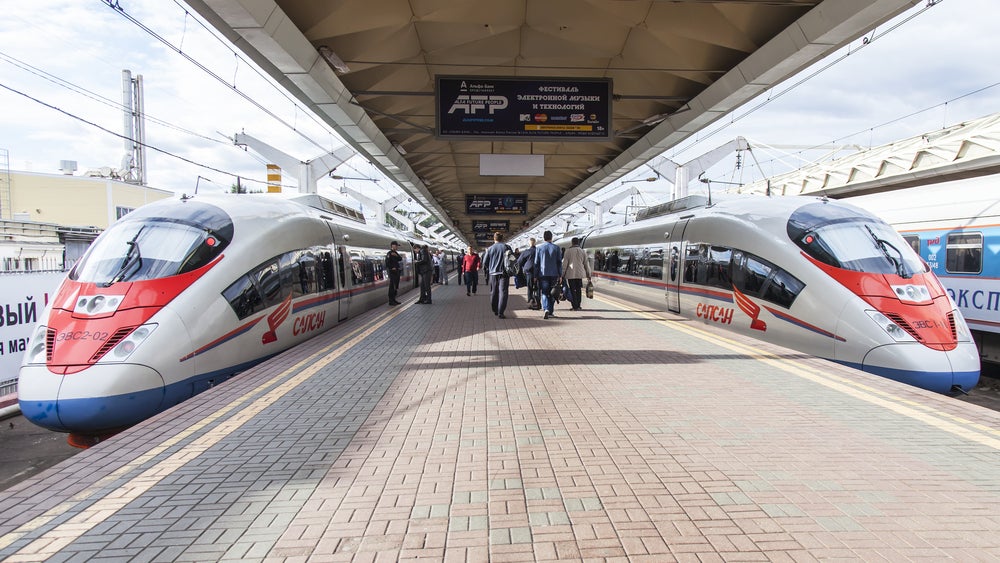
The Sapsan, also known as the Velaro RUS EVS, is an electric high-speed train. The train is part of the Siemens Velaro family, regionally known as the Siemens Velaro RUS.
The Sapsan, which takes its name from the Russian word for ’Peregrine Falcon’, is a Russian Gauge trainset with a maximum operational speed of 250km/h. It is the fastest passenger train currently operating in Russia, with a non-operational record speed of 290km/h.
Access the most comprehensive Company Profiles
on the market, powered by GlobalData. Save hours of research. Gain competitive edge.

Company Profile – free
sample
Your download email will arrive shortly
We are confident about the
unique
quality of our Company Profiles. However, we want you to make the most
beneficial
decision for your business, so we offer a free sample that you can download by
submitting the below form
By GlobalData
Sapsan trains operate from Moscow to Saint Petersburg and Nizhny Novgorod, as well as from Saint Petersburg to Nizhny Novgorod. The 250m trainsets normally operate in 10-car configurations with a capacity of 600 passengers.
Following the 2022 Russian invasion of Ukraine, Siemens suspended its contract to supply additional trainsets, as well as announcing it would end maintenance and other services, with Russian Railways stepping in to continue their maintenance. A Russian court later ruled that Siemens’ termination of the contracts was invalid.
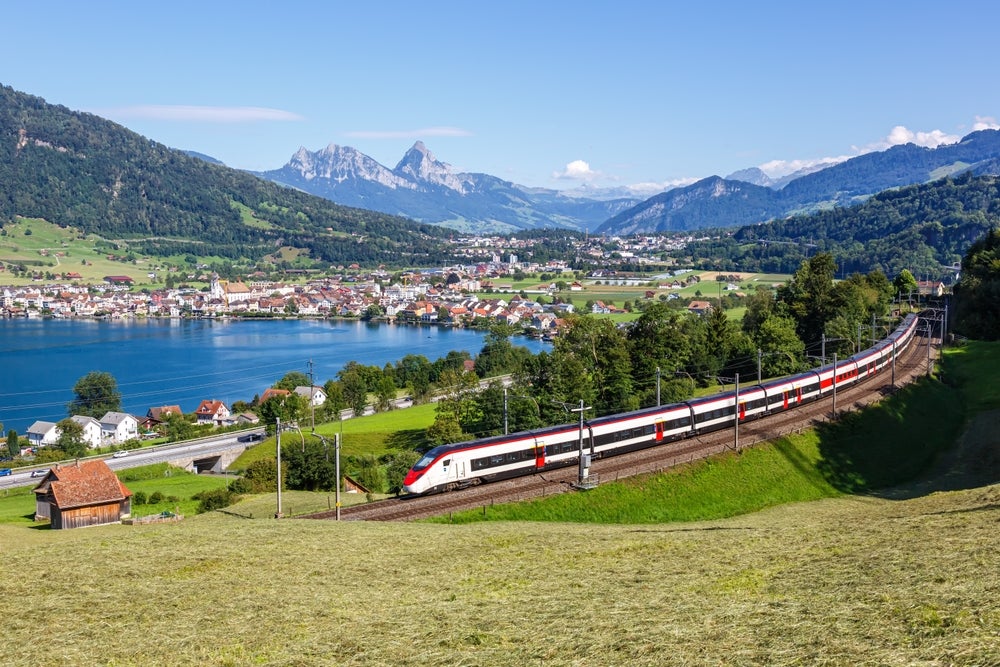
The RABe 501 is an electric-multiple unit high-speed train used by the Swiss Federal Railways (SBB), intended to replace the existing ETR610 models on the Trans-Alpine route from Milan to Basel and Zurich. SBB also intends to operate the RABe 501 – originally called the EC250 and later also called SMILE – on services further afield to Austria and Germany.
Built by Swiss rolling stock manufacturer Stadler, the 11-car trainsets operate at a top speed of 200km/h in Switzerland and 250km/h outside of Switzerland. The Rabe 501, nicknamed ‘Giruno’ from the Romansch word for ‘Buzzard’, has a capacity of 403 passengers – 117 in first class and 286 in second class. Two of the 202m train sets can be coupled together to accommodate over 800 passengers.
The Giruno is also known as the ‘Gotthard train’ since its main route uses the 57km-long Gotthard Base Tunnel, the longest railway tunnel in the world, which bores through the Swiss Alps.
The Giruno hit a record speed of 275km/h in testing and, according to Stadler, it is the world’s first single-decker low-floor high-speed train, and allows for step-free access. The RABe 501 also features signal boosters for 3G/4G cellular phone networks, power sockets for Swiss and international plugs, and large luggage racks.
Outside of Europe, the Philippine National Railways Bicol Express EMUs will be based on the Gruno, and Saudi Arabia Railways has also signed a contract for the supply of 10 trains which look to be shorter-length diesel multiple unit variants of the RABe 250.
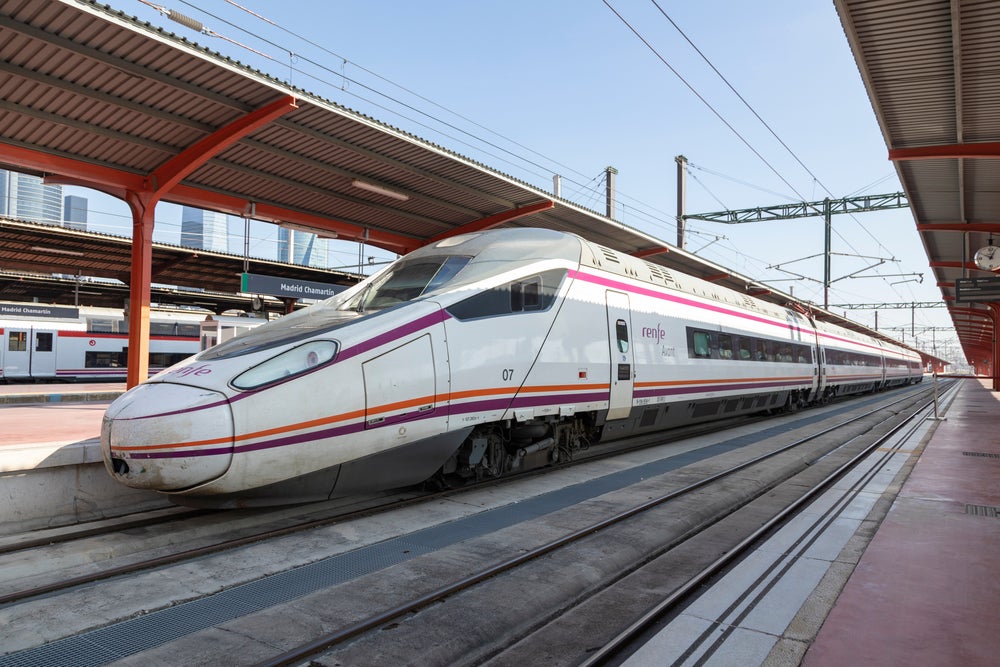
The Avant network serves mid-distance routes with high-speed trains specifically designed for short journeys. Spain’s national operator Renfe uses Avant Class 104 and Avant Class 114 Pendolino trains on Avan routes, built by Spanish manufacturer Construcciones y Auxiliar de Ferrocarriles (CAF) and France’s Alstom.
Avant Class 114, or S-114, trainsets comprise four single-voltage electric railcars, measuring 108m in total. Able to hit 250km/h, the Class 114 has a capacity of 237 seats per trainset, with only one accessible seat for passengers with reduced mobility per train
The S-114 – an upgrade of the 104 models – features an indoor public address system and both outdoor and indoor display monitors. Carriages are equipped with independent air conditioning systems in the driver’s cab and passenger berths; reclining and adjustable seats, and four toilets – with one adapted to people with reduced mobility. The trains also feature luggage racks inside the passenger lounges, equipped with anti-theft protection, and overhead roof racks.
The Avant 114 trains operate on the Madrid–Segovia–Valladolid high-speed line, as well as on high-speed services from Madrid to Puertollano and from Barcelona to Lérida.
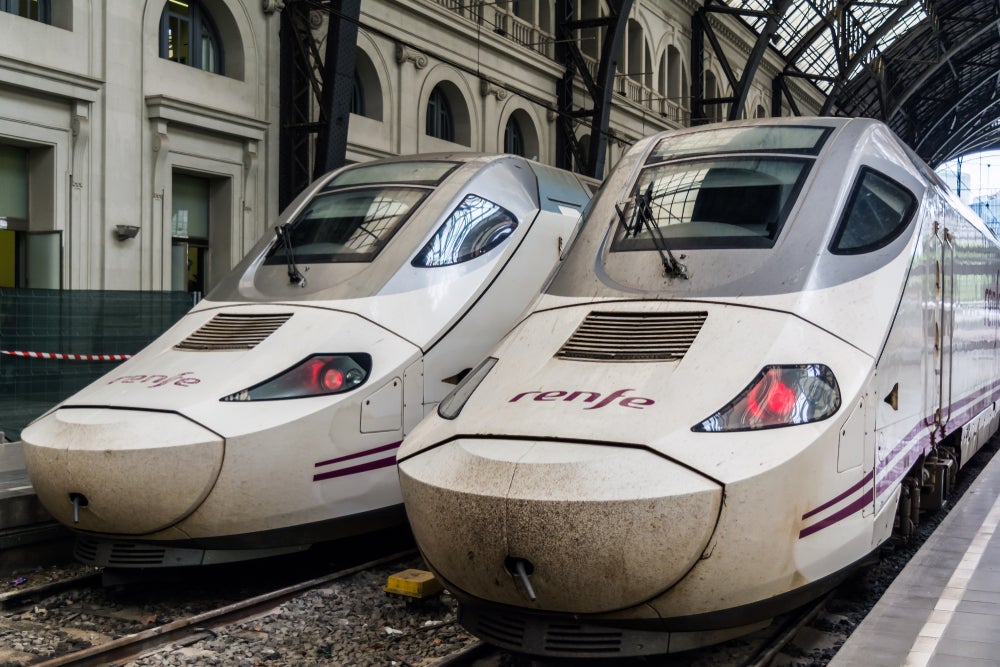
Alvia is Spanish operator Renfe’s second-fastest long-distance high-speed rail service. The route uses Talgo 250 rolling stock, with the newest iteration being the Renfe Class 730, or S-730, manufactured by Talgo and Bombardier in 2012.
The S-730s, nicknamed ‘Patitos’ in Spain from the native word for ‘ducklings’, are dual gauge, dual voltage, and hybrid trains. An updated variant of the Renfe Class 130, Patitos can operate using either electric or diesel power on both Standard and Iberian gauge railways, able to change gauge at low speed without stopping using Talgo’s RD variable gauge system.
Each 186m trainset can reach 250km/h and comprises 13 cars – two electric power cars, two diesel-power cars, and nine Talgo VII tilting passenger coaches with a total of 265 seats. The passenger coaches are divided into six second-class coaches, two first-class coaches, and a dining car.
The Patitos operate on Alia routes where sections are not electrified, thanks to their hybrid-power configuration, including high-speed services from Madrid to Coruña, Ferrol, Vigo, Pontevedra, Lugo, and Badajoz.
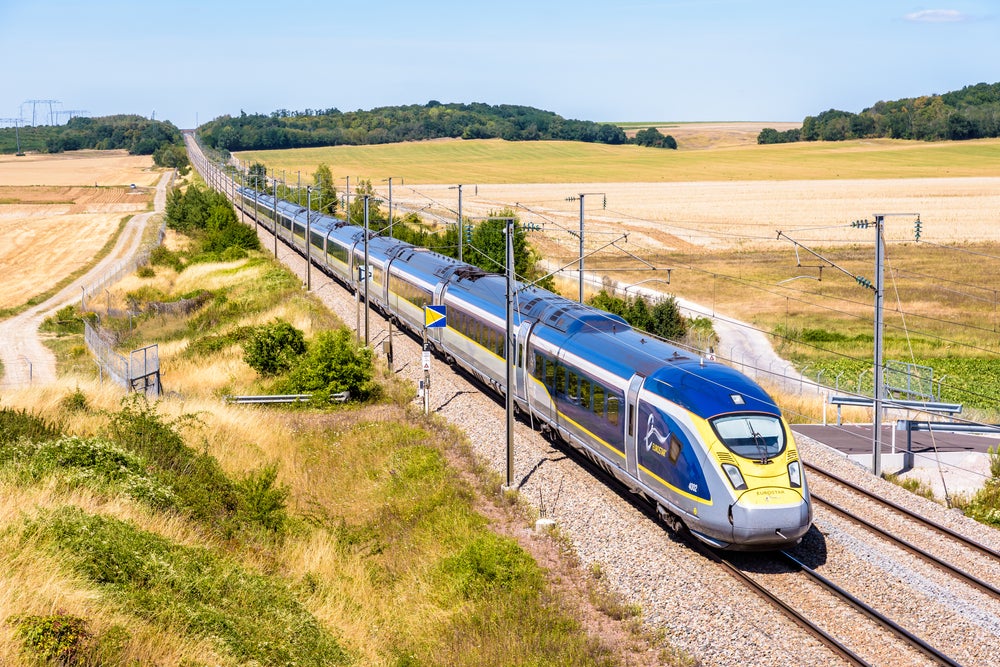
The British Rail Class 374, also referred to as the Eurostar e320, is an electric multiple-unit passenger train used on Eurostar services. The sixteen-car trains, which have a capacity of 900 passengers, operate across the Eurostar network on services from London to Paris, Brussels, and Amsterdam.
The e320 is part of the Velaro family, built by Siemens at its Krefeld facility in Germany. With a traction power of 16,000kW, the Eurostar e320 has a maximum operating speed of 320km/h. It uses eight identical but independent traction converter units and 64 axles, of which 32 are driven. Its traction system is designed to operate on 25kV AC and 1.5kV/3kV DC voltage systems.
Entering service in 2015, the Eurostar e320 is equipped with a regenerative braking system, a rheostatic brake system, and a pneumatic brake system. It is also fitted with special fire extinguishing equipment and fireproof doors and is designed to be operable for 30 minutes using its onboard power to exit a tunnel in the event of a fire – particularly necessary as Eurostar services travel through the channel tunnel.
The Eurostar e320 roof is equipped with eight pantographs for dealing with Europe’s different power systems and contact line types across the Eurostar network.
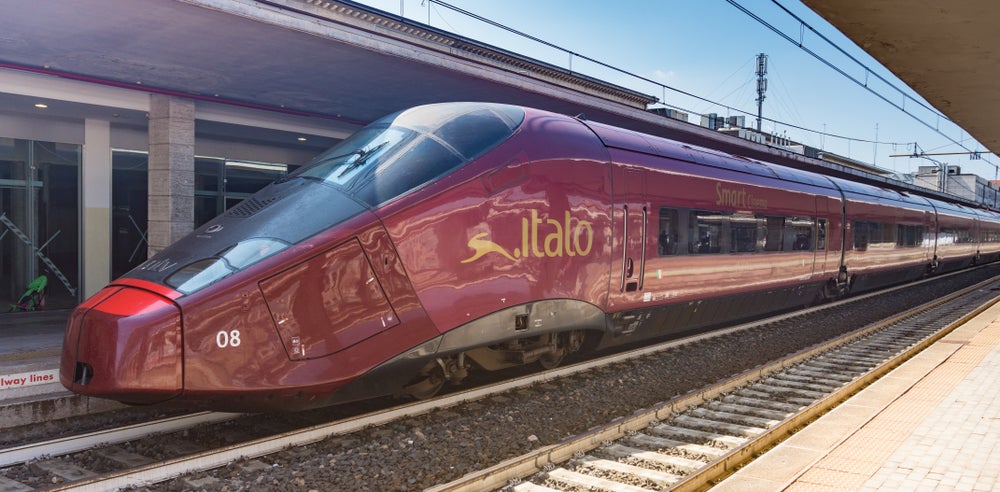
Built by Alstom, the first customer for the AGV (from the French Automotrice à grande vitesse) was Italian open-access operator Nuovo Trasporto Viaggiatori (NTV), trading under the name Italo in the country. The AGV 575 is a non-tilting, electric multiple-unit train that can reach 360 km/h and has an operational speed of up to 300 km/h.
Privately-owned NVT uses 25 AGV 575 trains across many of its routes in Italy, including the Turin–Milan–Bologna, Rome–Venice, and Bologna–Florence–Rome–Naples routes. The AGV 575 entered service in April 2012 and was touted at the time as the most modern train in Europe, with 98% of its components recyclable, and its lifecycle cost and electric consumption 15% less than that of close rivals.
The AGV is powered by the Onix traction system, which comprises 6.5kV IGBT power modules, a 3,600v power bus, and permanent magnet motors. The traction system is integrated below the body shell of the cars, which saves space and enables it to carry 20% more passengers. Each motor axle is powered by an individual Onix power inverter.
Built at Alstom facilities in Savigliano, Italy and La Rochelle, France, the seven-car trains operated by Italo are 132m long, and the eleven-car configuration measures 200m. The AGV features large interior compartments, wide gangways, large window surfaces and an HVAC system. Passenger facilities include Wi-Fi, onboard internet and live television. A 39-seat cinema car on the train provides entertainment to the passengers onboard.
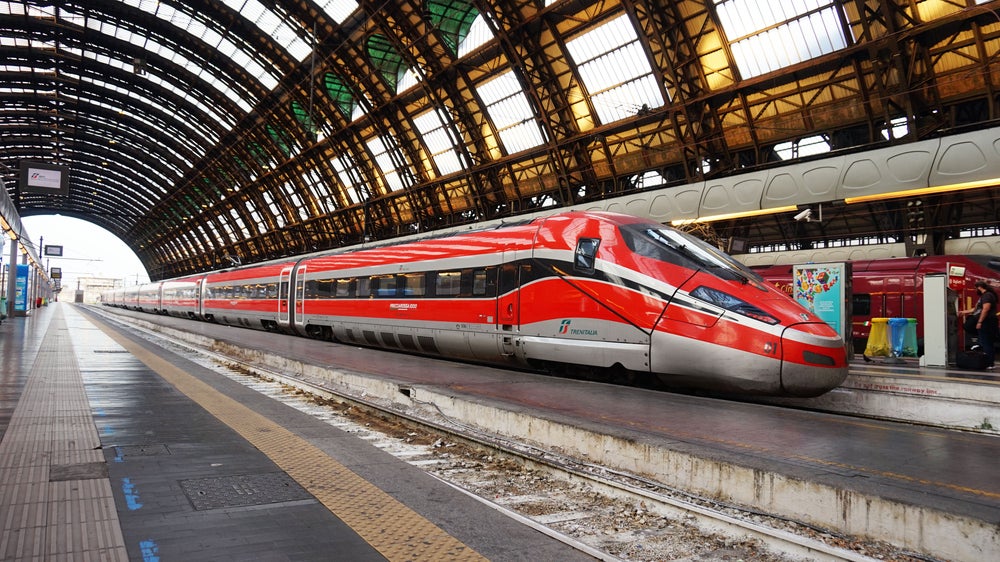
Italian state railway operator Trenitalia’s ETR1000, or Frecciarossa, was by Alstom and Hitachi Rail as a joint venture. The newest version of the ‘Red Arrow’ after the ETR500, the ETR1000 is also operating on Spanish railways. Private high-speed rail operator Iryo also uses 20 S109 trainsets on its routes, which are derived from the ETR1000.
Trenitalia operates 200 metre-long eight-car non-articulated ETR1000 trains with the capacity to seat 457 passengers and an engineered maximum speed of 400km/h.
In operation, the trains reach speeds of 300km/h but one ETR1000 set reached 389km/h during testing in 2015. 50 trainsets were built, but one is currently out of operation following the Livraga derailment.
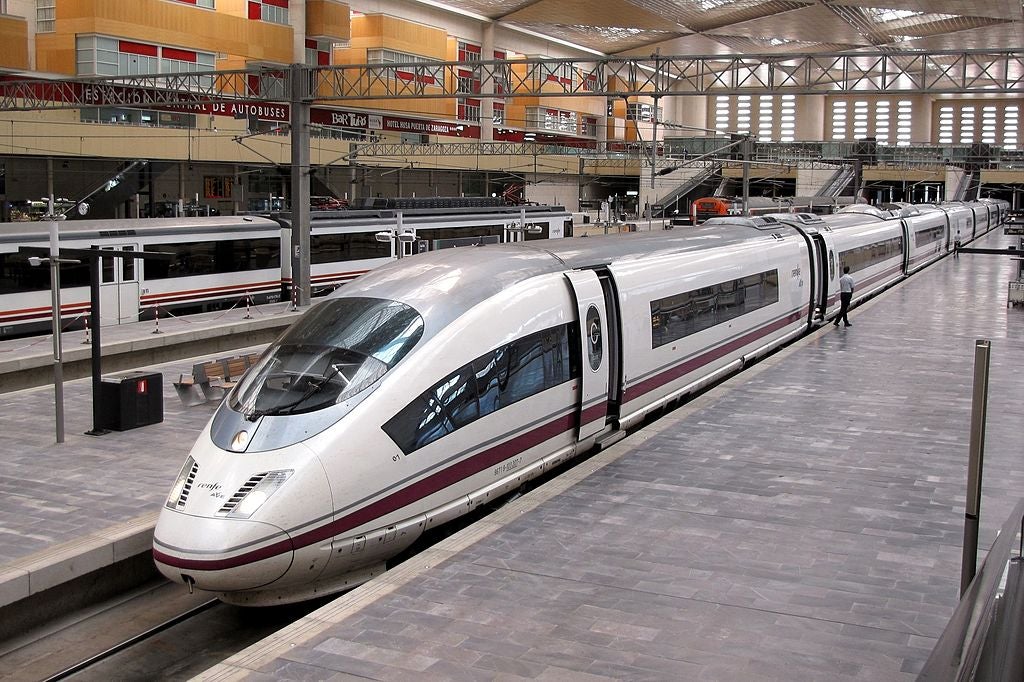
Spanish national railway company Renfe uses the Renfe Class 103 for its AVE high-speed service. Also known as Series 103 or S103, the trains are manufactured by Siemens under the Velaro family.
26 trainsets with a capacity to seat 404 passengers operate at a top speed of 310 km/h on the 621km Madrid–Barcelona railway. An S103 reached a record top speed of 403.7km/h during testing in 2016, a record speed in Spain.
The 8-car configuration that Renfe operates comprises two identical four-coach half-trains. Each section has an independent power system, apart from a high voltage line that runs along the entire length of the train and the active pantograph.
The end coaches contain both passenger seating and the driver’s cab, with a glass screen separating them. This gives passengers the opportunity to see the same view as the driver – however, the driver can set the screen to opaque if required.
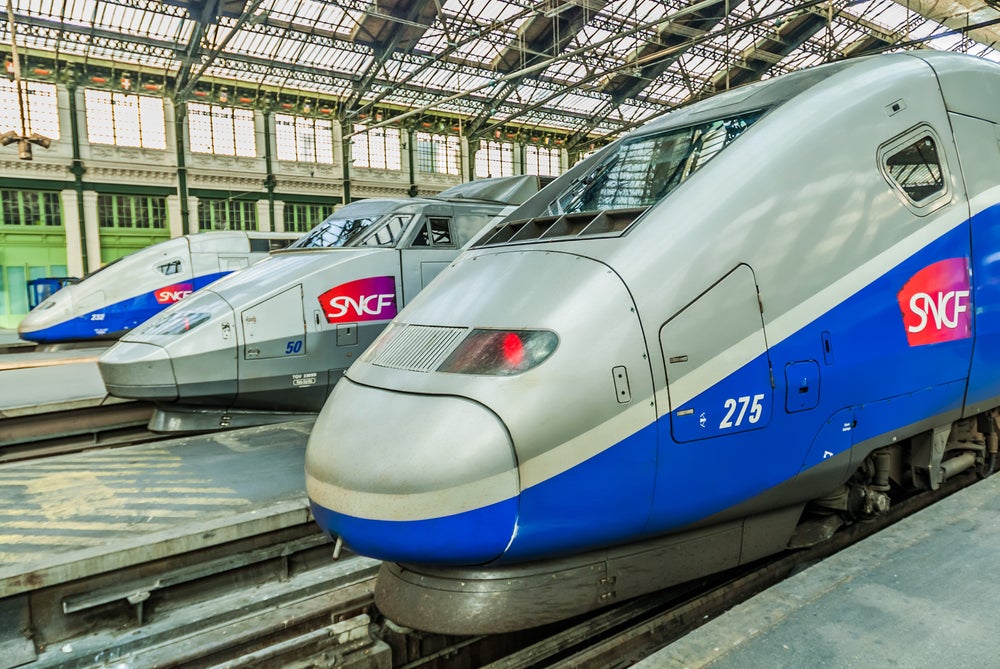
Initially running on Europe’s first high-speed railway in France, the Train à Grande Vitesse, or TGV, has repeatedly broken records for top speeds since its initial development.
The current record was set in 2007 when a Modified TGV POS reached a speed of 574.8kh/h, the current world record. The Alstom-manufactured trains are mainly operated by the French national railway SNCF, the TGV Duplex, Réseau, POS, and Euroduplex models operate at a top speed of 320km/h.
The newest model, the TGV-M, was unveiled in 2021. SNCF has placed an order for 100 trains for €2.7bn, expected to enter service in 2024 with a proposed ability to operate at 350km/h.
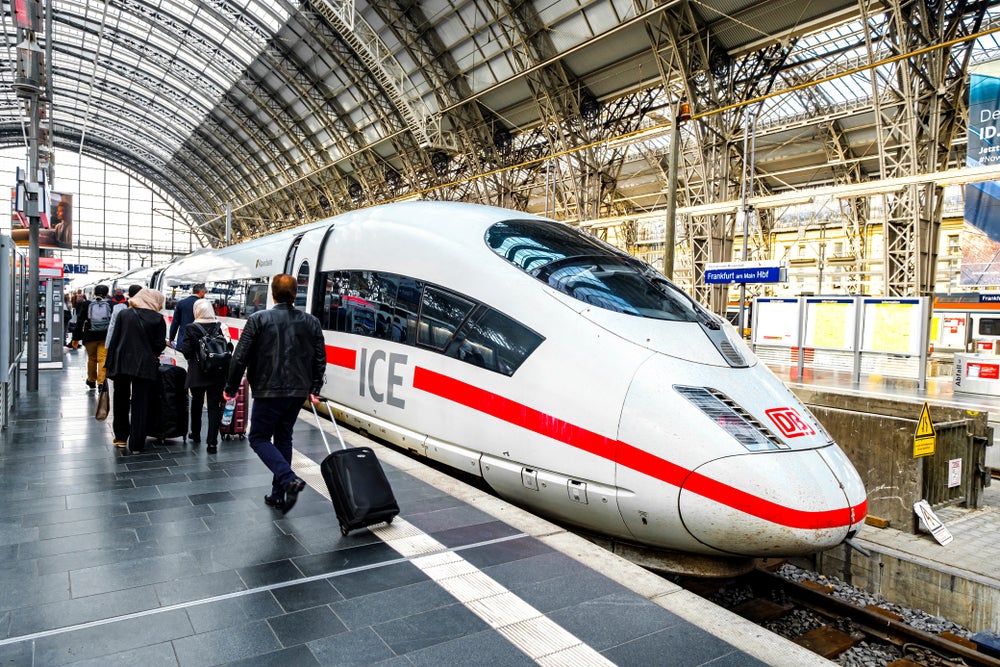
The Intercity-Express 3, or ICE 3, is a family of high-speed electric multiple-unit trains. The ICE 3 is operated mainly by Deutsche Bahn (DB), but also by Dutch Railway operator Nederlandse Spoorwegen (NS).
The flagship of high-speed rail in Germany, the trains are manufactured by Siemens and Bombardier. ICE 3 trainsets also operate on cross-border routes to France, Belgium, and the Netherlands.
The trains operate at 320km/h in Germany but the class 403 is also authorised to run at 330km/h on the high-speed line between Frankfurt and Cologne if required. Class 403 and 406 trains have recorded top speeds of 368km/h during testing.
Click here to read our list of the fastest high-speed trains in the world.